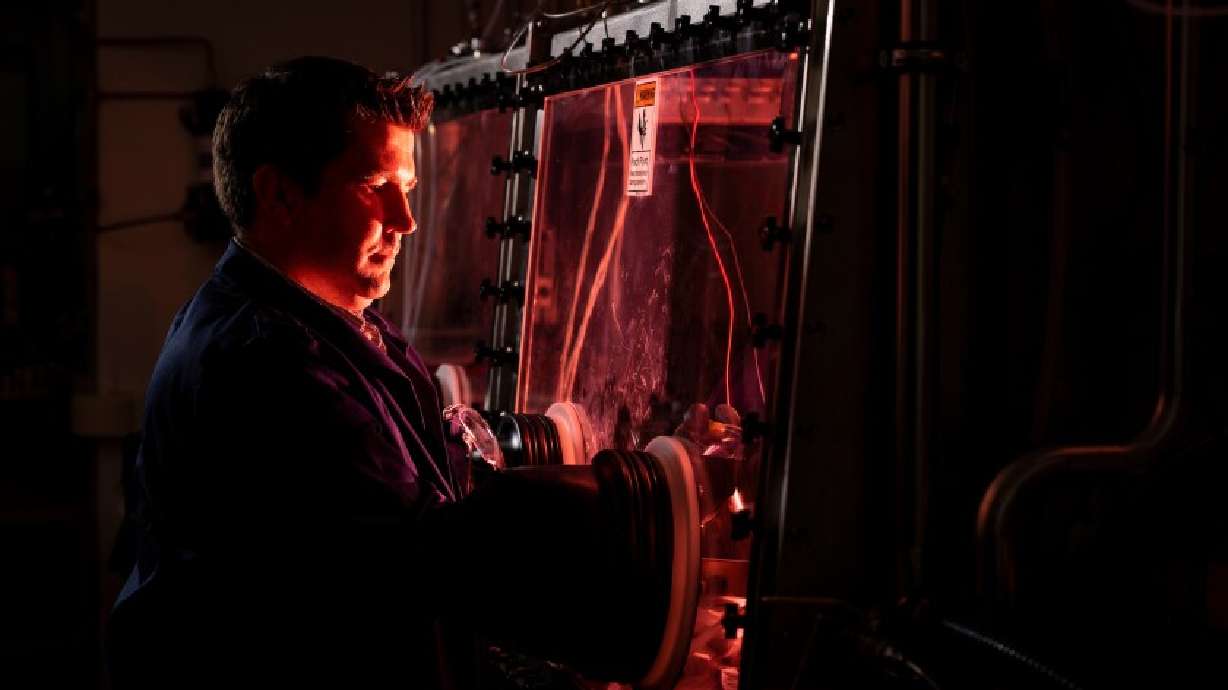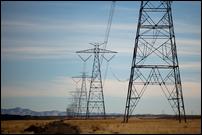Estimated read time: 5-6 minutes
This archived news story is available only for your personal, non-commercial use. Information in the story may be outdated or superseded by additional information. Reading or replaying the story in its archived form does not constitute a republication of the story.
PROVO — Nuclear power may be the key to a transition to cleaner energy, but can it be harnessed safely and effectively?
Brigham Young University professor and nuclear engineering expert Matthew Memmott and his colleagues think so, thanks to a new system they designed for safer nuclear energy production.
"(Nuclear energy) is the only baseload or controllable, 100% on-power that has no emissions at all," Memmott said.
Baseload refers to the ability to harness an energy source at any time.
A nuclear power plant can produce 8,000 times more power than fossil fuels while also being an environmentally friendly alternative. The only problem is that when accidents happen, they can be deadly with long-lasting impacts, such as the 1986 Chernobyl disaster.
"We have a generational memory of nuclear being bad," Memmott said. "It was introduced by, unfortunately, leveling two cities, which was horrible and tragic. But that's really how the public came to know about it."
However, Memmott and his team's new system is designed to mitigate the risk of disasters like Chernobyl.
Typically, the standard nuclear reactor used in America is the light-water reactor.
Related:
"Uranium atoms are split to create energy, and the products left over will radiate massive amounts of heat. They are kept in solid fuel rods, and water is run through the rods to keep everything cool enough. If there is not enough of a flow of cooling water, the rods can overheat and the entire facility is at risk for a nuclear meltdown," explains a news release from BYU.
In Memmott's system, the radioactive elements are stored in molten salt instead of fuel rods.
He said that isn't exactly a new idea, but his version has new features.
"Instead of trying to trap uranium inside a zirconium alloy rod, and then putting that inside of a big pressure vessel, and then putting that inside of containment where you're trying to mechanically keep things in place in case something goes wrong," Memmott said. "Instead, what you do is you dissolve the fuel directly into a salt that's melted or a molten salt."
The interesting thing about this, Memmott said, is that salt bonds to the dissolved fuel chemically.
"Instead of having to try and trap the fuel inside mechanically, where these mechanical failures could fail or melt, now we have the salt itself chemically bonding that fuel," Memmott said. "Right away, we have a system that's impossible to melt down. There's nothing to melt, and it's not likely to cause any release problems because there's no pressure and there's nothing to push it out."
Additionally, the molten salt nuclear reactor design not only has the potential to eliminate dangerous nuclear waste but turn its byproducts into valuable commodities that can be harvested from the salt and sold.
Not only do we have a reactor that's really resistant to accidents, but now we can actually separate out those components and sell them and make a profit from the other pieces and then we're left, potentially, with no nuclear waste.
–Matthew Memmott, BYU Department of Chemical Engineering
Molybdenum-99, for example, is an extremely expensive element — $30 million per gram — that can only be bought from the Netherlands and is used in approximately 20 million medical imaging procedures and scans each year. It can be extracted with Memmott's design.
"We can now go to that salt and apply specific electrochemistry to pull out pieces one at a time, or groups at a time. So this nuclear waste — which is really just a mix of uranium and all these different components — we can now pull those out and separate and sell them," Memmott said. "Not only do we have a reactor that's really resistant to accidents, but now we can actually separate out those components and sell them and make a profit from the other pieces and then we're left, potentially, with no nuclear waste."
Another benefit of Memmott's system is its size, which is relatively small compared to other nuclear reactors.
According to the release from BYU, a typical nuclear power plant is built with a little over one square mile to operate to reduce radiation risk, with the core itself being 30 feet by 30 feet.
Memmott's molten salt nuclear reactor is 4 feet by 7 feet, and because there is no risk of a meltdown, there is no need for a similar large zone surrounding it. Despite the reactor itself being small, it carries the capacity to produce enough energy to power 1,000 American homes.
It does so cheaply, too.
Memmott and his team had a third party conduct an economic analysis of his system and they found that it would cost about 3 cents per kilowatt hour, "which is among the cheapest of electricity production sources that we have," Memmott said.
"We intentionally worked really hard to make sure that it was cheaper than everything else, or at least as cheap as everything else, so it could be competitive, so that adoption wouldn't be forced but rather would be natural because people would be looking for the cheapest source of electricity," Memmott said.
Still, why not just rely on other sources of renewable energy that don't carry the risk — even if minuscule — of a nuclear disaster?
This is a big deal—and we are excited to have Utah on the list. We must continue to support base load power generation while we grow alternative energy sources. If you are serious about decarbonizing emissions, Nuclear absolutely must be a significant part of the solution. https://t.co/EPllDAga8d
— Spencer Cox (@SpencerJCox) October 27, 2022
Memmott said renewable energy sources such as wind, solar and hydroelectricity are "great" options, but they don't have the control or consistency that nuclear has, as far as turning them on and off.
"We try to mitigate that with (storage) batteries, but our technology isn't perfect in that yet. Whereas nuclear is totally emissions-free and has the potential with some of these new technologies to be just as cheap as the renewables, if not cheaper, but we can have full power, complete baseload, rather than relying on these inconsistent sources of power," he said.
Nuclear, he said, is the way forward when it comes to a green energy transition.
The energy community would agree, too.
TerraPower LLC, Bill Gates' advanced nuclear reactor company, and power company PacifiCorp on Thursday said that they will undertake a study to evaluate deploying up to five additional Natrium (nuclear) reactors in the West — including in the Beehive State.
Rocky Mountain Power, a division of PacifiCorp, is also building the world's first advanced nuclear plant in Kemmerer, Wyoming.
"This is just a first step, as advanced nuclear power needs to be evaluated through our resource planning processes as well as receive regulatory approval," Gary Hoogeveen, president and CEO of Rocky Mountain Power, said in a statement. "But it's an exciting opportunity that advances us down the path to a net-zero energy future."











